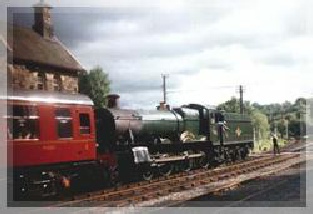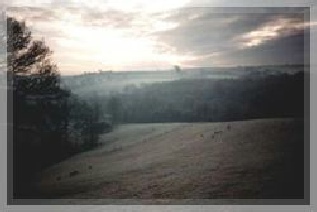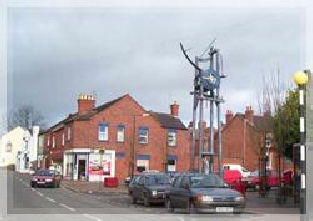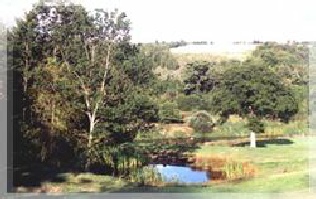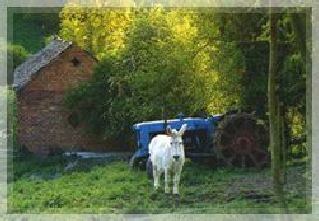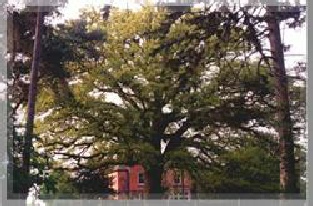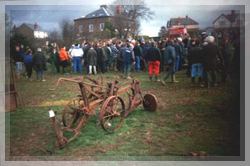|
Attractions in Highley The Station (Fig 1) Many visitors to Highley make straight for the Station on the Severn Valley Railway. This is beautifully restored and has a regular service of trains, running every day for most of the summer and in school-holiday time and weekends at other times of the year. The railway provides an ideal way to see the Severn Valley and is also a good way to arrive in Highley itself. In the bookshop at the Station there are displays on the history of Highley and its surroundings, the wildlife, local walks as the usual visitor information. These provide an excellent introduction to Highley itself. Walks in and around the village (Fig 2) Within Highley, there are many attractive walks. The long distance Severn Way passes through the village, as does the long distance Bridleway, the Jack Mytton way. It is possible to do a variety of circular walks, ranging from a mile or so to over 10 miles, all starting from the station. These are described in the book “Walks around Highley”, available locally from the Station or by post from the Highley Initiative. The village is on a ridge between the broad Severn Valley and the narrow heavily-wooded Borle Brook valley, and these features provide a fascinating mixture of scenery and habitats. The Guided Tour of Highley gives a feel for these walks. Highley Village (Fig 3) Within the village it is possible to visit the ancient parish church, the historic Edwardian village centre, the planned mining community of Garden Village in the north of the parish, as well as seeing examples of public art such as the Miners’ Memorial in the Country Park, the Clock Sculpture in the centre and the Gateway Signs at either end of the village. In the summer, a local group produces floral displays that won a gold award in the 2004 ‘Britain in Bloom’ competition. The River and the Severn Valley Country Park For those who want a leisurely day, a stroll around the various parts of the Severn Valley Country Park will appeal. These were once the sites of coal mines, but they have largely been reclaimed by Nature. They cover an area of some 180 acres dedicated for the quiet enjoyment of the countryside by the public. There are four trails around the Park, a Woodland trail (45 mins), a Riverside trail (1-2 hrs), a History trail (1-2 hrs), and an Easy Access trail specifically designed for disabled or partially sighted users. There is a Visitor Centre with displays and refreshments, and access is from Alveley or Highley. A halt on the Severn Valley Railway serves the Country Park. Wherever you go, there are fine views of the River Severn. The Discovery Trail (Fig 4) Recently completed, this trail leads visitors from Highley Station into the village centre. Designed by West Midlands Artist, Saranjit Birdi, it draws on 12 months of research to interpret the history and culture of Highley through works of art. Opposite the station it begins with the sculpture, “A song of steam trains”, featuring ceramic tiles that include the work of children from the village school and which also features designs from local artist Elaine Gregory. A pavement trail then leads into the middle of Highley. Here Saranjit has produced seven bronze plaques, illustrating the progress of Highley from Domesday to the present day. Each plaque features the nicknames of former miners; “Flaming Heck”, “Dick the Devil”, “Coddy” as well as images from the villages’s history. The trail won first prize in the 2002 Shropshire Community Pride Competition. Descriptive leaflets are available at the visitor centre coach at Highley Station. Sports Highley has an open-air swimming pool, open during the summer, an 18-hole golf course, a golf driving range and the new Severn Centre which provides a host of sporting and leisure activities. For more details, see their website at: www.severncentre.co.uk/ Other historical sites Brooksmouth Bridge A towpath bridge built in 1828 in cast iron by the Coalbrookdale Company. Borle Mill A corn mill, originating from the 13th century with buildings of all ages. Donkey Bridge An attractive early 18th century twin-arched Packhorse Bridge. Netherton An ancient farming community. Netherton House became the manor house in 1670. Billingsley Colliery Railway The line of this can be followed along the Borle Valley and to Rays Farm (the latter section forming part of the Jack Mytton Way). Garden Village Developed before World War I to house workers for Billingsley Colliery. It is a good example of an early industrial garden village. Clee View A remarkably long row of well-preserved terraced miners' cottages. |
|
|
|
|
Figure 1 Highley Station |
|||
|
|
|||
|
Figure 2 Frosty morning in the Borle Valley |
|||
|
|
|||
|
Figure 3 The village centre with the Clock Sculpture (Photograph by Mick Cotton) |
|||
|
|
|||
|
Figure 4 Highley Sculpture Trail |
|||
|
|
|||
|
Figure 5 Borle Mill (Colin Knight) |
|||
|
|
|||
|
Figure 6 The Old Oak at Netherton (Jan Ensum) |
|||
|
|
|||
|
Figure 7 Farm sale, Garden Village |




